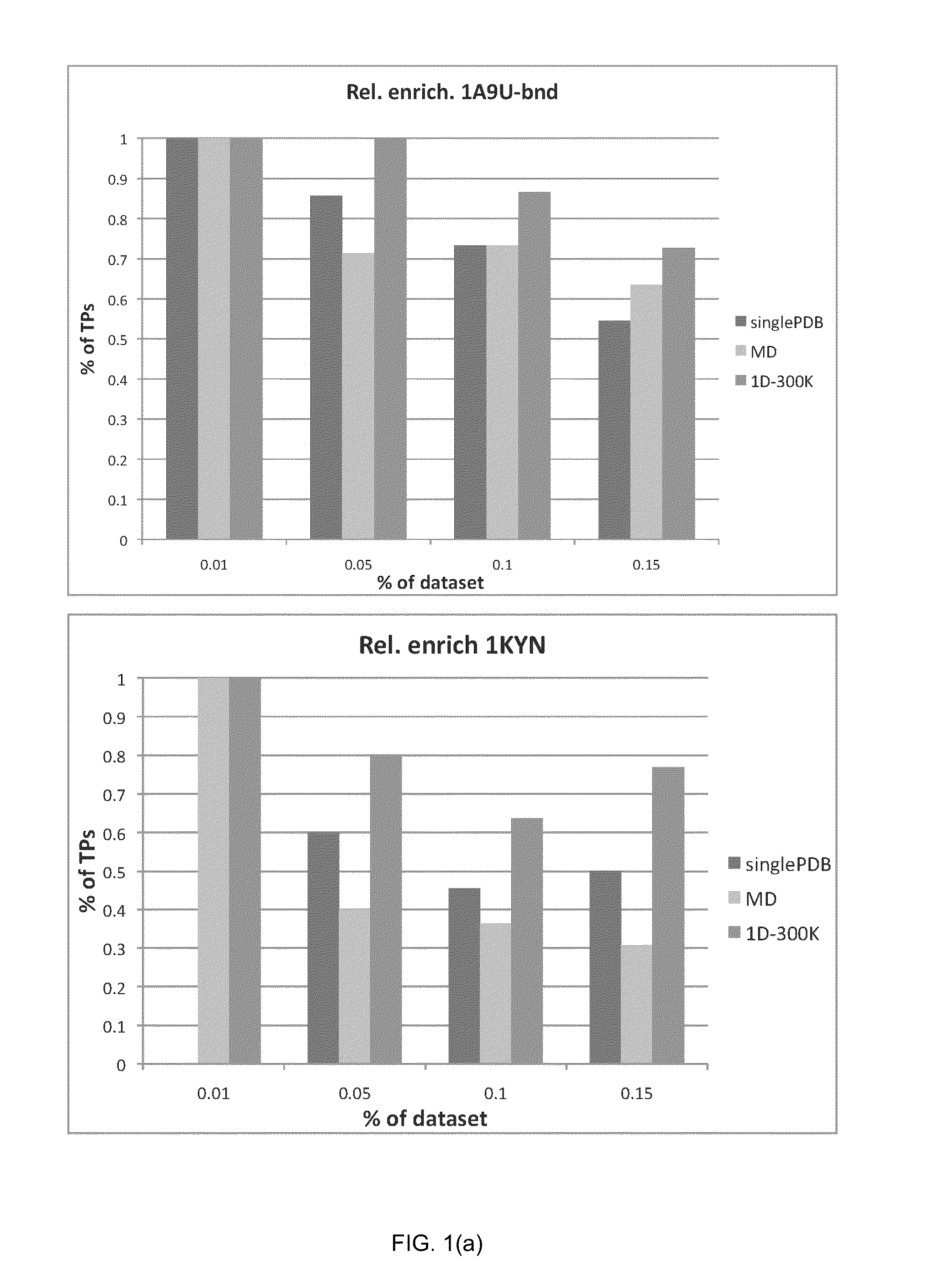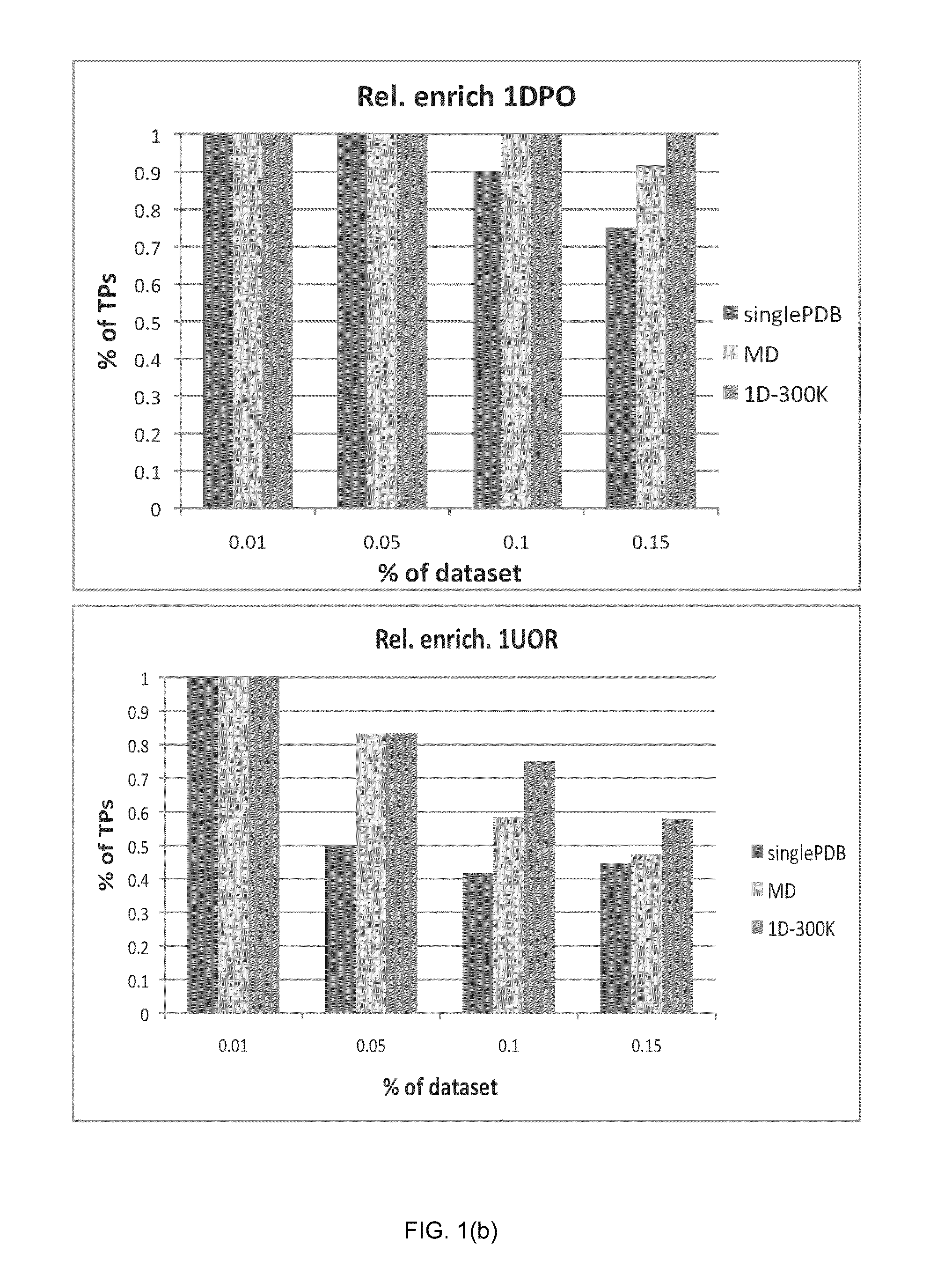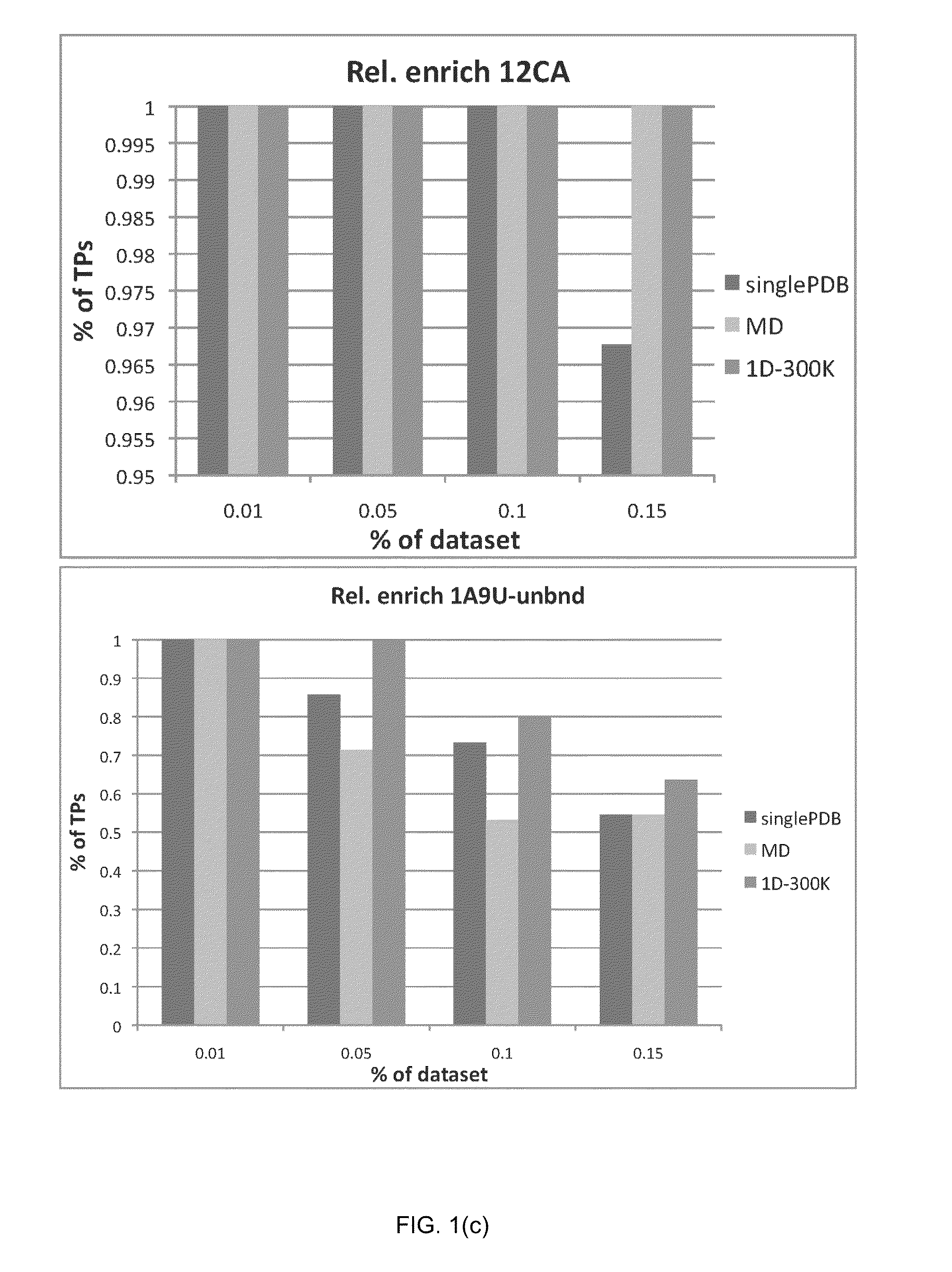Method of exploring the flexibility of macromolecular targets and its use in rational drug design
- Summary
- Abstract
- Description
- Claims
- Application Information
AI Technical Summary
Benefits of technology
Problems solved by technology
Method used
Image
Examples
example 1
Application of the Method of the Invention in Virtual Screening
[0121]In order to verify the validity of the drug-induced perturbation method in perturbed-EDMD, and its superiority in enhancing docking enrichment compared to single PDB (x-ray crystal structure) docking and ensemble docking on a standard MD ensemble, the inventors applied this method on eight protein systems for a comparative study. The goal was to see whether the application of the perturbed-EDMD method on proteins related to disease would generate ensembles that could yield superior results when compared to a single crystal structure or ensembles derived from standard MD simulations (which are the usual methods in the state of the art) in virtual screening campaigns. If results were superior for the perturbed-EDMD ensemble, it would mean the application of the method in in silico screening would be useful in search of new drugs.
[0122]The eight test protein systems were chosen based on two conditions. First, the prot...
PUM
 Login to View More
Login to View More Abstract
Description
Claims
Application Information
 Login to View More
Login to View More - R&D
- Intellectual Property
- Life Sciences
- Materials
- Tech Scout
- Unparalleled Data Quality
- Higher Quality Content
- 60% Fewer Hallucinations
Browse by: Latest US Patents, China's latest patents, Technical Efficacy Thesaurus, Application Domain, Technology Topic, Popular Technical Reports.
© 2025 PatSnap. All rights reserved.Legal|Privacy policy|Modern Slavery Act Transparency Statement|Sitemap|About US| Contact US: help@patsnap.com



